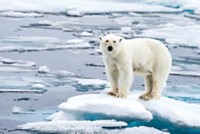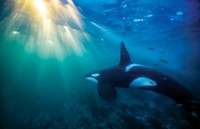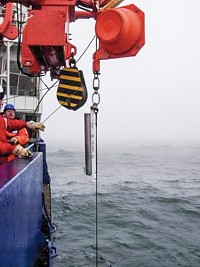Advertisement
Grab your lab coat. Let's get started
Welcome!
Welcome!
Create an account below to get 6 C&EN articles per month, receive newsletters and more - all free.
It seems this is your first time logging in online. Please enter the following information to continue.
As an ACS member you automatically get access to this site. All we need is few more details to create your reading experience.
Not you? Sign in with a different account.
Not you? Sign in with a different account.
ERROR 1
ERROR 1
ERROR 2
ERROR 2
ERROR 2
ERROR 2
ERROR 2
Password and Confirm password must match.
If you have an ACS member number, please enter it here so we can link this account to your membership. (optional)
ERROR 2
ACS values your privacy. By submitting your information, you are gaining access to C&EN and subscribing to our weekly newsletter. We use the information you provide to make your reading experience better, and we will never sell your data to third party members.
Environment
Diet determines orcas’ pollution exposure
Killer whales that largely eat marine mammals have higher levels of harmful pollutants
by Priyanka Runwal
October 18, 2023
| A version of this story appeared in
Volume 101, Issue 35

In 2001, more than 90 nations signed a treaty to reduce or possibly eliminate the production and use of the so-called “dirty dozen” highly toxic chemicals that accumulate in the environment. These included pesticides such as DDT and chlordane and industrial compounds such as polychlorinated biphenyls (PCB). All of these chemicals take decades to break down, get passed along the food chain, and are hazardous to humans and animals. Over the years, at least a dozen more persistent organic pollutants have been added to the treaty’s list.
Orcas, also known as killer whales, are among the most affected marine animals. A recent study led by McGill University researchers found that the North Atlantic Ocean orcas they studied that mostly ate fish were less contaminated compared with the orcas that preyed on marine mammals such as seals and dolphins (Environ. Sci. Technol. 2023, DOI: 10.1021/acs.est.3c05516).
In the Canadian Arctic Ocean, the orcas they studied had the highest levels of DDT, which was unexpected for what’s largely considered a pristine region, says Anaïs Remili, a postdoctoral researcher at McGill University and the study’s co-author. “Even with the PCB levels, I had to go back to the data because I thought there’s no way. It’s too high, something’s wrong.”
According to Remili, the PCB concentrations they measured in the blubber of orcas from the Canadian Arctic and Eastern Canada were more than twice the levels known to cause reproductive failure in marine mammals. Add other pollutants to the mix, and the effects could be more toxic. “It paints a really scary situation,” she adds.
Many of these contaminants have been banned for decades, so the study’s findings indicate that the chemicals are “incredibly persistent and were designed to be incredibly persistent,” says Peter Ross, an ocean pollution expert at the nonprofit Raincoast Conservation Foundation who was not involved in the research. “The very properties that proved beneficial from commercial perspectives are the properties that make these chemicals a real problem in the environment.”





Join the conversation
Contact the reporter
Submit a Letter to the Editor for publication
Engage with us on Twitter